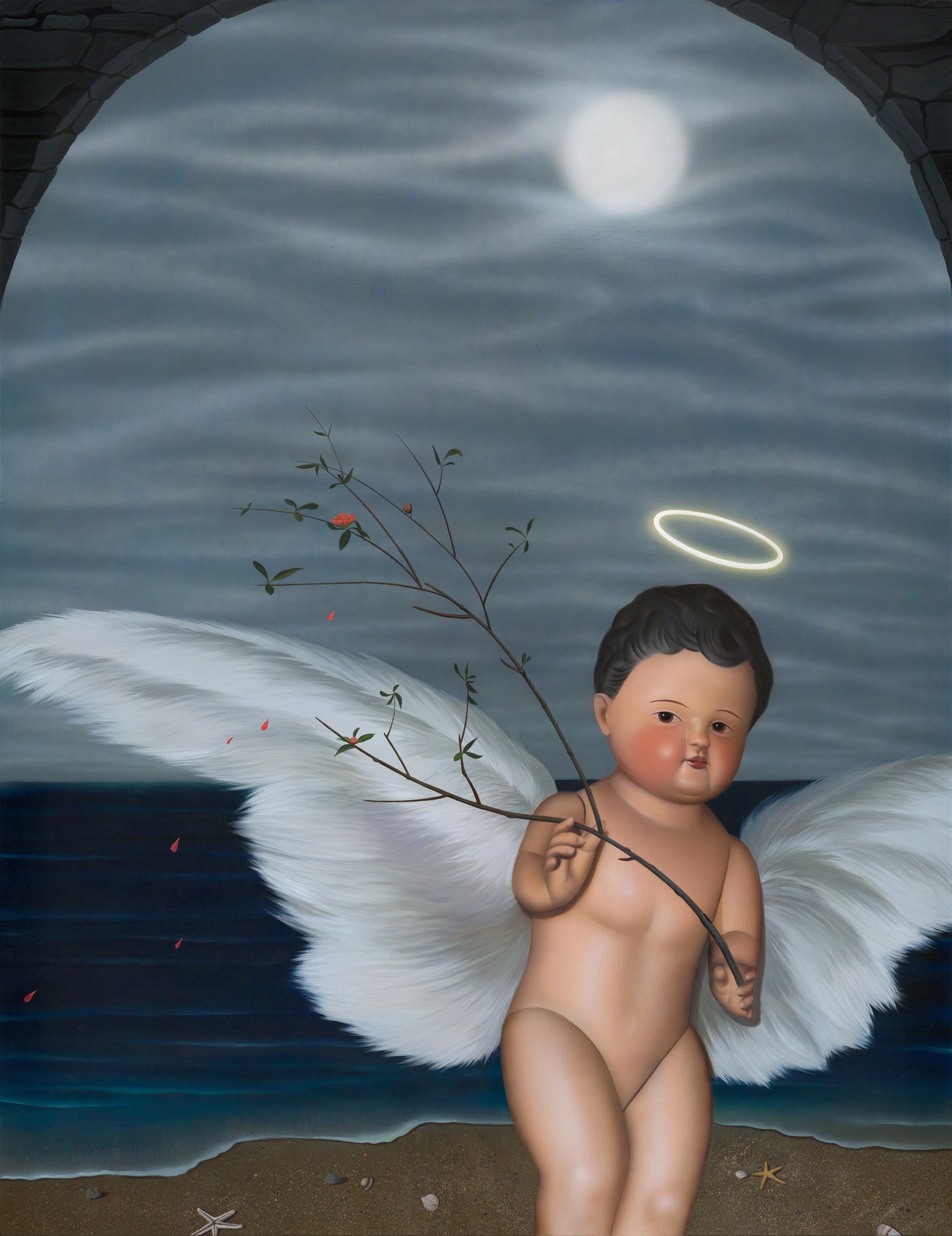Sun Yitian Fertility Gods, 2024
Fertility Gods prominently features a winged cherubic child holding a pomegranate twig depicted at nighttime at a beach. Rounded arches in the upper corners suggest a frame or archway.
The winged figure evokes Christian associations yet as the plural in title suggests, references are multi-layered. The portrayal of the figure is reminiscent of the artist's paintings of plastic or inflatable dolls. A certain artificiality keeps the figure from registering as fully human: its neck is oddly regular and the leg joints appear mechanical. Two beautifully executed wings on the other hand appear realistic—but of what: Angel wings? The neon-like halo echoes the hazy moon high above.
While the small child can be read as a mythical Amor, angel, or putto, the motif also recalls posters from the era of China's one-child policy, incantatory images of prayer and propaganda. Instead of the more customary lily often held by an angel—symbolizing the virgin's purity—this figure carries a delicate twig with red buds, some of which are falling. In Chinese mythical iconography the pomegranate, perhaps in direct contrast to the lily, is a symbol of fertility and associated with the wish for many children and happiness. This association reinforces the connection to the Chinese family policies.
The one-child policy was enforced in China 1979-2016, changed subsequently to two children in 2016 and since 2021 allows for three children. Sun Yitian, who was born in 1991 has noted the impact of the policy on her and her peers.

